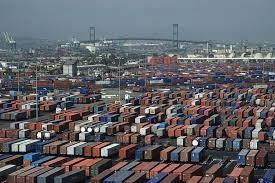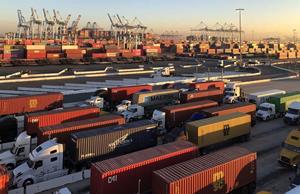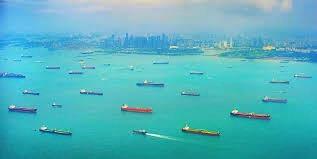 On Wednesday October 13th, the White House convened a meeting of business leaders, directors of major ports and union representatives. The purpose was to review the deteriorating situation in U.S. ports resulting in disruption in supply chains that has now assumed serious proportions with political implications for the Administration.
On Wednesday October 13th, the White House convened a meeting of business leaders, directors of major ports and union representatives. The purpose was to review the deteriorating situation in U.S. ports resulting in disruption in supply chains that has now assumed serious proportions with political implications for the Administration.
Following extensive discussions, the White House announced both public and private commitments including 24/7 operation at the ports of Los Angeles and Long Beach. These facilities represent the points of entry for 40 percent of containers to the U.S. Despite moving an additional 25 percent of containers above the volume handled in September 2020, West-coast port facilities are overwhelmed and ships are waiting at anchorage to be berthed. The International Longshore and Warehouse Union has agreed that its membership will work extra shifts to clear backlogs. Major companies will expand hours over which their shipments can be received. Night transport from docks and into distribution centers is invariably more efficient than during daylight hours.
 Individual company commitments include Walmart that has accepted night-time operation for distribution centers with UPS committing to 24/7 operation and data sharing. FedEx will increase their night-time operations. Home Depot will move an additional 10 percent of containers using off-peak hours and Target is moving half of its containers at night to enhance delivery rates. It is anticipated that the combined efforts of these companies will move an additional 3,500 containers per week with the initiative extending through the remainder of 2021.
Individual company commitments include Walmart that has accepted night-time operation for distribution centers with UPS committing to 24/7 operation and data sharing. FedEx will increase their night-time operations. Home Depot will move an additional 10 percent of containers using off-peak hours and Target is moving half of its containers at night to enhance delivery rates. It is anticipated that the combined efforts of these companies will move an additional 3,500 containers per week with the initiative extending through the remainder of 2021.
Walmart, Home Depot Inc., Costco Wholesale Corporation and Target Corp have each chartered smaller vessels carrying up to 10,000 containers at prices frequently double that for a large container carrier. In 2012 individual companies including Walmart last used chartered vessels during West-coast port strikes. Large companies have the ability to make alternative shipping arrangements but small and intermediate-scale retailers will be deprived of goods for the holiday season.
During the past month freight rates from China to West-coast ports have dropped by almost 50 percent partly due to reduced production attributed to power shortages and cancellation of orders which has taken immediate pressure off shipping companies. The problem of available containers to consign agriculture products including fruit to Asia still exists as shipping companies are retuning empty containers to ports in China and Vietnam. China continues to delay operations in their ports based on the unnecessary requirement to test crew members for COVID before allowing vessels to dock causing delays of up to seven days.
 The 30 percent increase in demand in the U.S. for manufactured products from Asia coupled with inherent inefficiencies exacerbated by COVID has created the supply chain problem. For similar reasons Europe has also experienced congestion in ports and shortages on store shelves.
The 30 percent increase in demand in the U.S. for manufactured products from Asia coupled with inherent inefficiencies exacerbated by COVID has created the supply chain problem. For similar reasons Europe has also experienced congestion in ports and shortages on store shelves.
Over the intermediate term the U.S. will have to address inefficiencies in port operations, many of which relate to extortionist union demands. Complementary considerations include the availability of long-distance drivers and vehicles, enhancing coordination and logistics and reducing dependence on just-in-time management of inventory. With higher costs for ocean shipping and land-transport and with the financial consequences of disruptions in supply, it is time for U.S. manufacturers to reconsider on-shoring where possible with greater use of automation and robotics to offset labor costs.